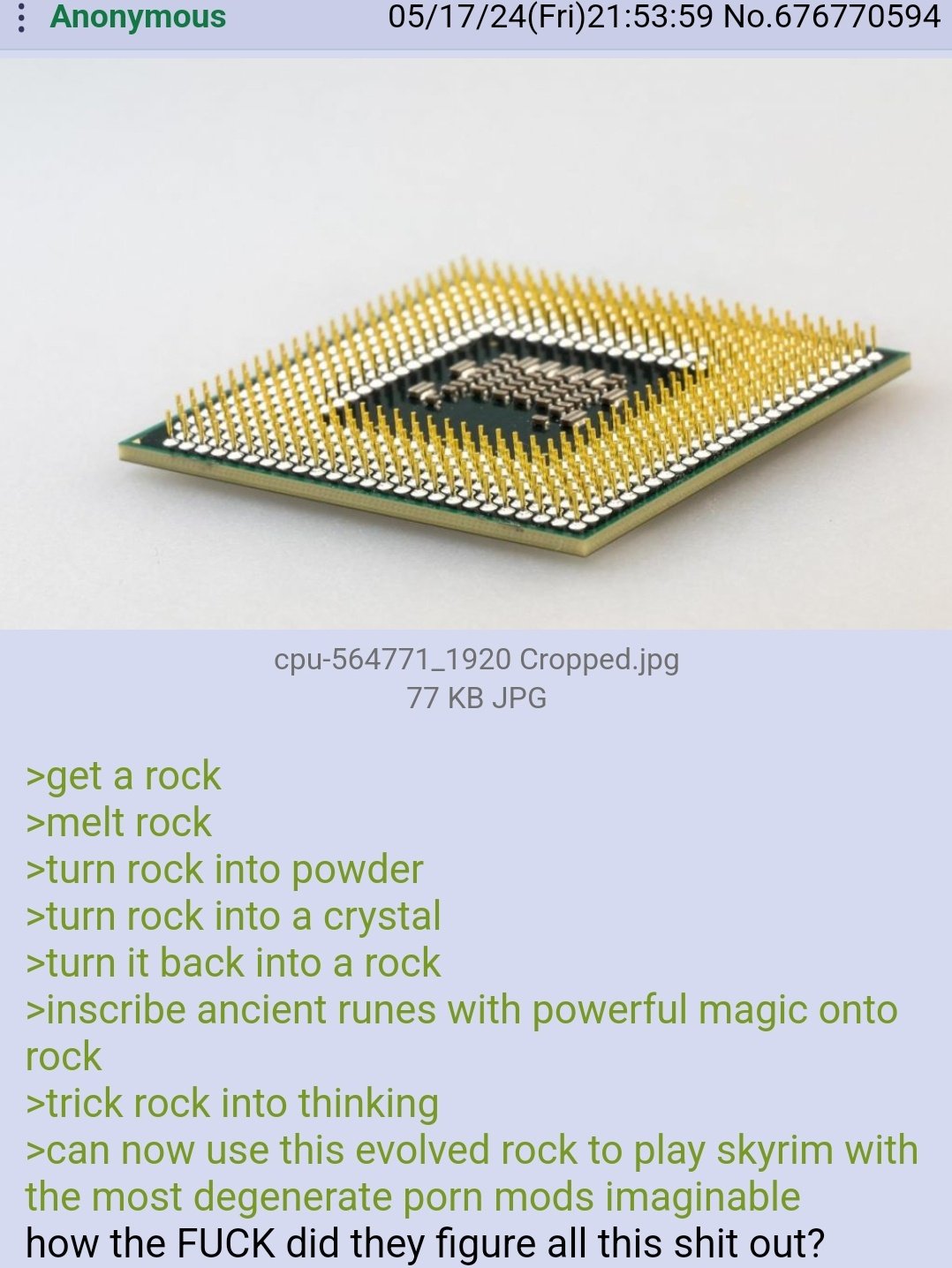this post was submitted on 07 Jun 2024
741 points (97.2% liked)
Greentext
4420 readers
1145 users here now
This is a place to share greentexts and witness the confounding life of Anon. If you're new to the Greentext community, think of it as a sort of zoo with Anon as the main attraction.
Be warned:
- Anon is often crazy.
- Anon is often depressed.
- Anon frequently shares thoughts that are immature, offensive, or incomprehensible.
If you find yourself getting angry (or god forbid, agreeing) with something Anon has said, you might be doing it wrong.
founded 1 year ago
MODERATORS
you are viewing a single comment's thread
view the rest of the comments
view the rest of the comments

I'm not sure what the typical explanation is, but a transistor is not a wire.
A wire is a conductor. It conducts electricity from end to the other.
A transistor is a semi-conductor device made from semi-conducting materials, so it conducts electricity between 2 ends with a variable electrical resistance. This variable can be controlled by putting voltage on the third leg. This way a transistor is basically a resistor with a variable resistance, which unlike a resistor is also controllable by a third input.
This ability is a property of the material. It cannot be constructed by a regular wire.
I think OP is referring to a typical SRAM bit.